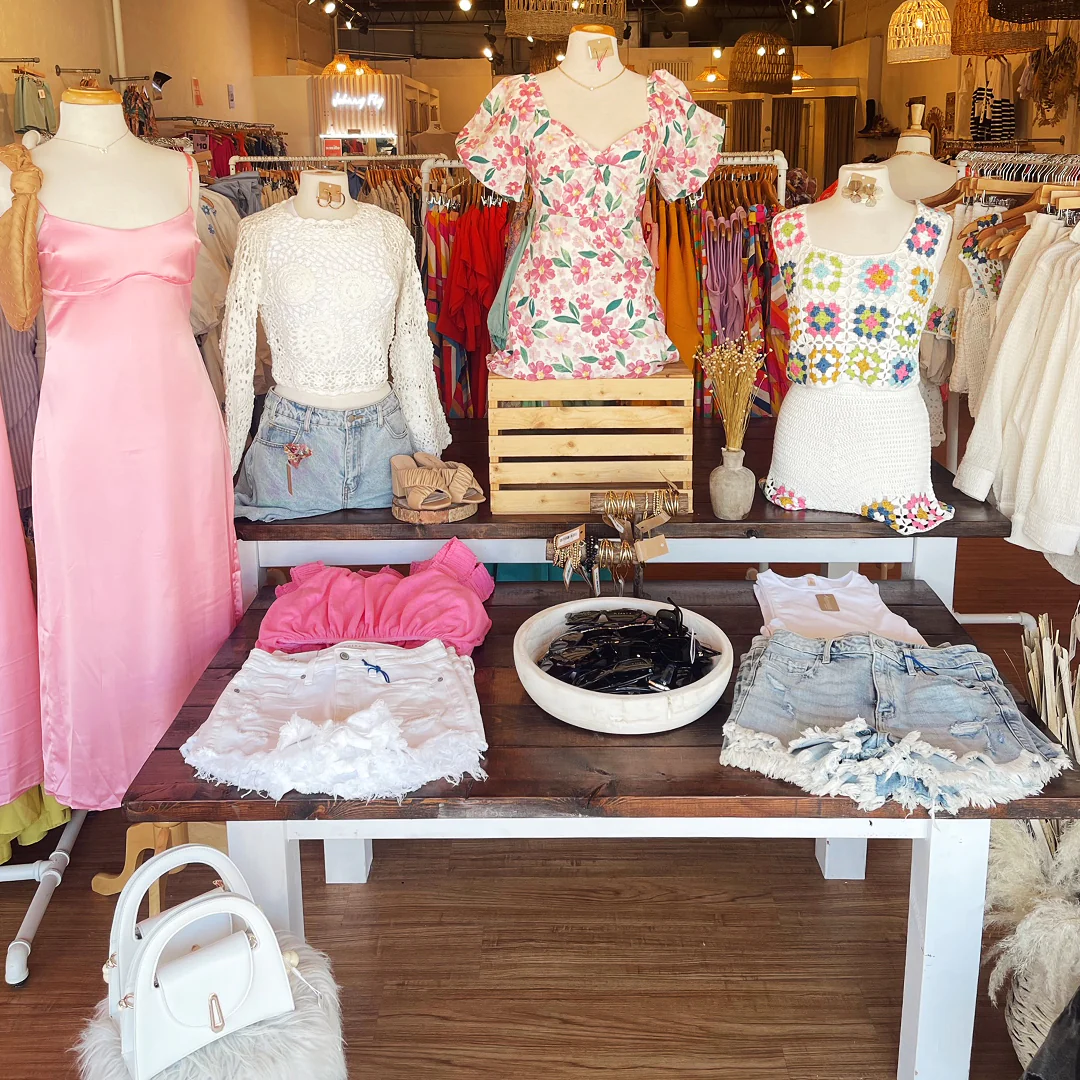Unveiling the Keys Behind Affordable Boutique Fashion
Unveiling the Keys Behind Affordable Boutique Fashion
Blog Article
Exploring the Development and Effect of Clothing on Modern Fashion Trends
The advancement of clothing has actually considerably influenced contemporary style fads, merging historical criteria with cutting-edge technologies. Renowned numbers like Coco Chanel and Yves Saint Laurent revolutionized the fashion sector by presenting concepts that prioritize convenience and access, which continue to reverberate today.
Historical Fashion Influencers
In the tapestry of fashion history, specific numbers have left an enduring mark, forming the trends and styles that specify whole periods. Coco Chanel, a cutting edge developer, redefined ladies's fashion by presenting comfy, elegant clothes that left from restrictive corsets.
Elsa Schiaparelli is another crucial number, renowned for her progressive layouts that integrated surrealist art, collaborating with Salvador Dalí to produce wayward items that tested conventional visual appeals. Her ingenious use of color and strong patterns resounds in contemporary fashion. Yves Saint Laurent, at the same time, democratized haute couture with prêt-à-porter collections, bringing path styles to the masses and establishing a precedent for contemporary ready-to-wear lines.
These enthusiasts, to name a few, not only revolutionized style in their times but also set sustaining fads that resonate in today's style sector, offering a foundation whereupon modern-day designers proceed to introduce and build. Their traditions underscore the relevance of creativity and daring in style's ever-evolving story.
Technical Developments in Style
In the middle of the vibrant landscape of the garment industry, technological developments stand at the forefront of advancement, reshaping exactly how developers produce and consumers engage with fashion. The assimilation of 3D printing has actually reinvented layout procedures, making it possible for designers to experiment with complicated frameworks and lasting materials that were formerly impossible. This innovation promotes rapid prototyping, lowering waste and expediting manufacturing times.

Smart fabrics, embedding technology into materials, are likewise changing the market. Advancements like temperature-regulating and self-cleaning textiles offer boosted capability and convenience. Wearable technology, including features like fitness tracking and communication, includes a new dimension to style, combining looks with practicality.
Social Shifts and Design
As technical innovations remain to reshape the fashion business, cultural shifts are similarly significant, redefining design and customer choices. In recent times, the increase of social networks platforms has actually accelerated the dissemination of worldwide fashion patterns, permitting varied cultural influences to converge and exist together. This digital interconnectivity has actually assisted in the fast exchange of concepts, causing a more eclectic and comprehensive analysis of design that mirrors the complex nature of modern-day society.
Social recognition and admiration have actually triggered developers to draw inspiration from a more comprehensive range of historic and ethnic contexts, incorporating conventional concepts with contemporary aesthetics. This combination has actually caused style that resonates with a wider audience, promoting a feeling of identity and belonging across various demographics. In addition, the enhancing demand for customization has driven brand names to use customizable alternatives, making it possible for customers to share individuality while mirroring their social heritage.
Additionally, shifting social worths have actually affected fashion, with inclusivity and diversity ending up being central themes. The sector has started to embrace models and influencers of various body types, ethnic cultures, and sex identities, difficult standard appeal criteria. This change highlights the power of cultural changes in forming the future of style, as design ends up being a more genuine expression of cumulative and individual identity.
Sustainability and Modern Style
While the fashion business continues to progress, the important for sustainability has come to be progressively urgent, affecting contemporary design methods. This shift aims to address environmental concerns and ethical considerations, resulting in a reevaluation of standard production approaches. Designers are now additional reading integrating lasting materials, such as organic cotton, recycled polyester, and naturally degradable materials, right into their collections, decreasing the ecological footprint of fashion. The increase of sluggish style, which stresses high quality over amount, motivates customers to purchase timeless items instead than transient patterns.
Furthermore, modern design is characterized by its development in lessening waste and promoting circularity. Techniques such as zero-waste pattern cutting and 3D knitting are acquiring traction, enabling developers to create garments with marginal fabric waste. In addition, brand names are adopting transparent supply chains, making certain responsibility and promoting customer trust. This method not just minimizes environmental impact but additionally enhances the social responsibility of style homes.

Future Trends in Style

Sustainability will certainly proceed to be a driving force in forming future fashion patterns. The industry is progressively adopting green materials and honest manufacturing approaches, reacting to a growing customer need for responsible methods. Innovations such as bio-fabricated materials and closed-loop recycling systems are readied to redefine how apparel is generated and eaten, minimizing ecological influence while keeping design and quality.
Cultural changes, consisting of the increase of inclusivity and diversity, will certainly likewise play a crucial role. As society ends up being extra knowledgeable about social concerns, style is expected to end up being a system for expression and adjustment. Designers will likely concentrate on developing collections that show a broader variety of experiences and identifications, promoting representation and accessibility.
Final Thought
The evolution of apparel considerably impacts modern-day fashion patterns, where historical impacts merge with contemporary styles. This ongoing evolution emphasizes fashion's role as a mirror to social values and technological development, suggesting a future abundant with innovation and inclusivity.
The advancement of clothing has dramatically affected modern-day fashion patterns, merging historical criteria with sophisticated technologies.In the middle of the dynamic landscape of web the style sector, technical innovations stand at the leading edge of technology, improving exactly how designers produce and consumers involve with style.While the style sector continues to evolve, the necessary for sustainability has come to be increasingly urgent, influencing modern layout practices. As sustainability becomes ingrained in modern-day style, it leads the way for a much more responsible Website and mindful style sector.
The evolution of clothing dramatically affects contemporary style fads, where historical influences combine with contemporary styles.
Report this page